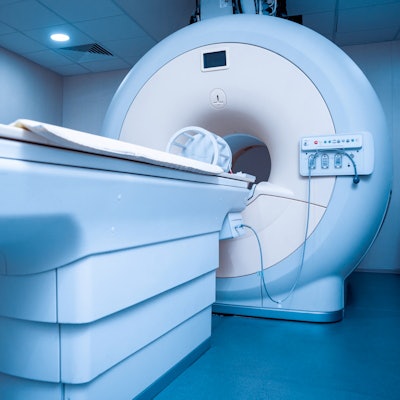
Radiologic technologists can minimize the risk of MRI accidents and ensure patient and staff safety by following best practices and being proactive, according to a talk on August 4 at the AHRA 2021 meeting in Nashville, TN.
In his presentation, John Posh, lead MRI technologist at the Robert Wood Johnson Medical Center in New Jersey, discussed the nature of risk relating to accidents and injuries, identifying risk in plain sight and the potential outcomes of incomplete risk management.
"Risk is inherent in everything we do," said Posh, who also previously led MRI safety and education initiatives at Philips Healthcare and Metrasens. "Although MRI is with risk, we can identify risk before it's allowed to mature into harm. You often don't see the problems in front of your face."
Posh said in his experience, MRI accidents are happening on a regular basis but are infrequent enough that hospitals don't use resources to mitigate problems.
"It's not like radiation safety where it's mandated by the federal government," he said. "There's very little mandates for MRI safety at the federal level. There are some regulatory bodies that have standards."
4 types of MRI accidents
The four types of accidents Posh went over during his presentation included hearing loss, burns, projectiles, and screening failures. "These are 100% preventable with best practices," he said.
More details on each one are as follows:
- Hearing loss. MRI machines can produce sound exceeding 99 dB, the same sound intensity that can be felt at an active construction site. Lack of protection from such intensity can lead to hearing loss in patients. Staff members can provide patients with earplugs and headphones to help protect their ears during examinations, Posh said.
- Burns. Many materials today contain ferrous materials and can facilitate burns in patients. Some proactive steps that can prevent burns include providing extra padding and gowns for patients. Patients should also be screened for the presence of conductive materials, and coils and wires should never be looped, Posh said. All conductors should also be isolated from the patient both electrically and thermally.
- Projectiles. It's common knowledge that MRI machines attract metal objects to the point where such objects can be violently pulled into machines. Posh said a proper four-zone layout should be utilized when assessing which objects could potentially be projectiles. Ferrous-free equipment should be used wherever possible and proper labelling should be performed for equipment, Posh said. Further protection can be added by a timeout at the door for all patients, as well as by deploying visual and physical barriers.
- Screening failures. Patients must be screened for ferromagnetic material prior to receiving an MRI. It's a multiphased process: patients are physically screened through interviews and gowning. Medical records are also reviewed, as well as prior imaging studies. Posh said screening should be done more than once, adding that screening is "never optional" and must be conducted by level 2 personnel. Whole-body screeners and hand wands can be used to physically screen patients.
Being proactive
Risk for MRI accidents can effectively be mitigated by using a Swiss cheese model of risk management, where multiple steps and precautionary actions can lead to improved overall safety, according to Posh.
These include fostering an environment of care, being compliant with regulations and standards, controlling access, evaluating operational workflow, and providing training and education for patients and staff.
"Safety is our most important mandate in MRI," Posh said. "You can get by with lousy quality images sometimes or less-than-stellar equipment, but one thing you can never compromise on is the overarching mandate that patients must be kept safe at all times when in our care."



















